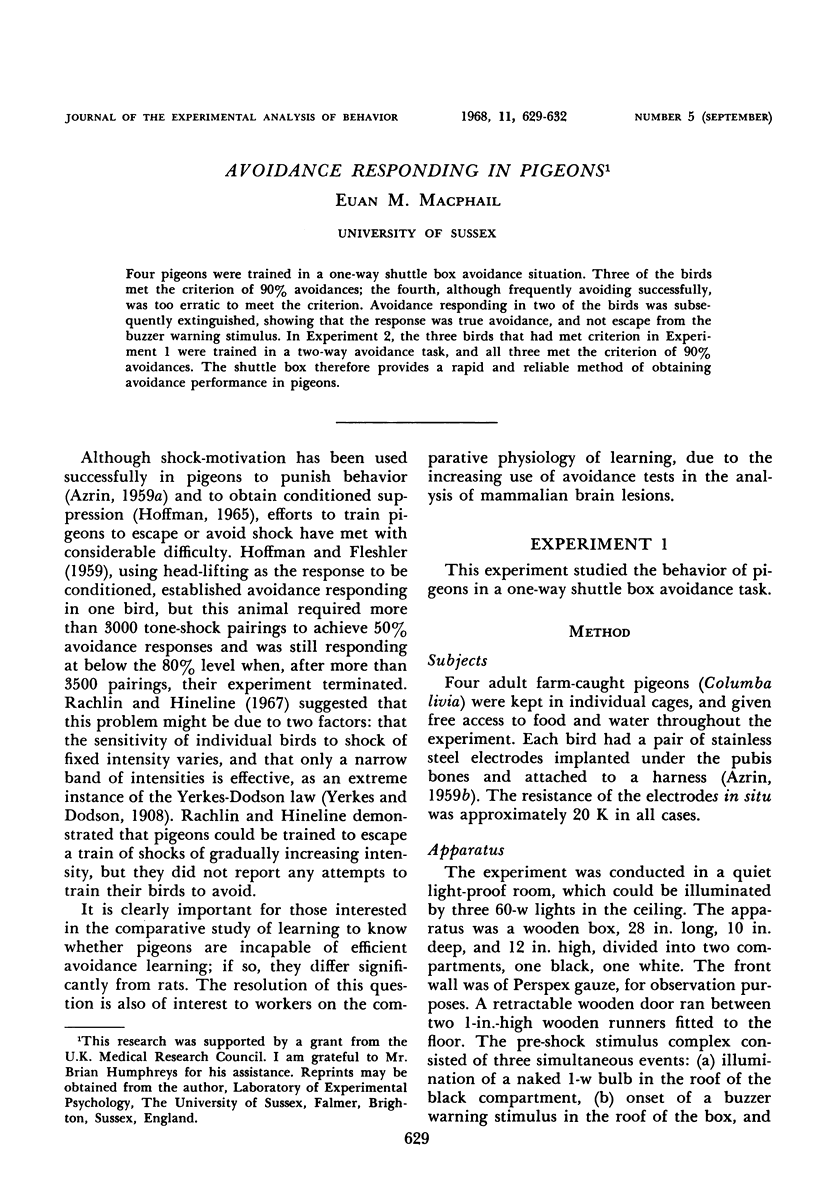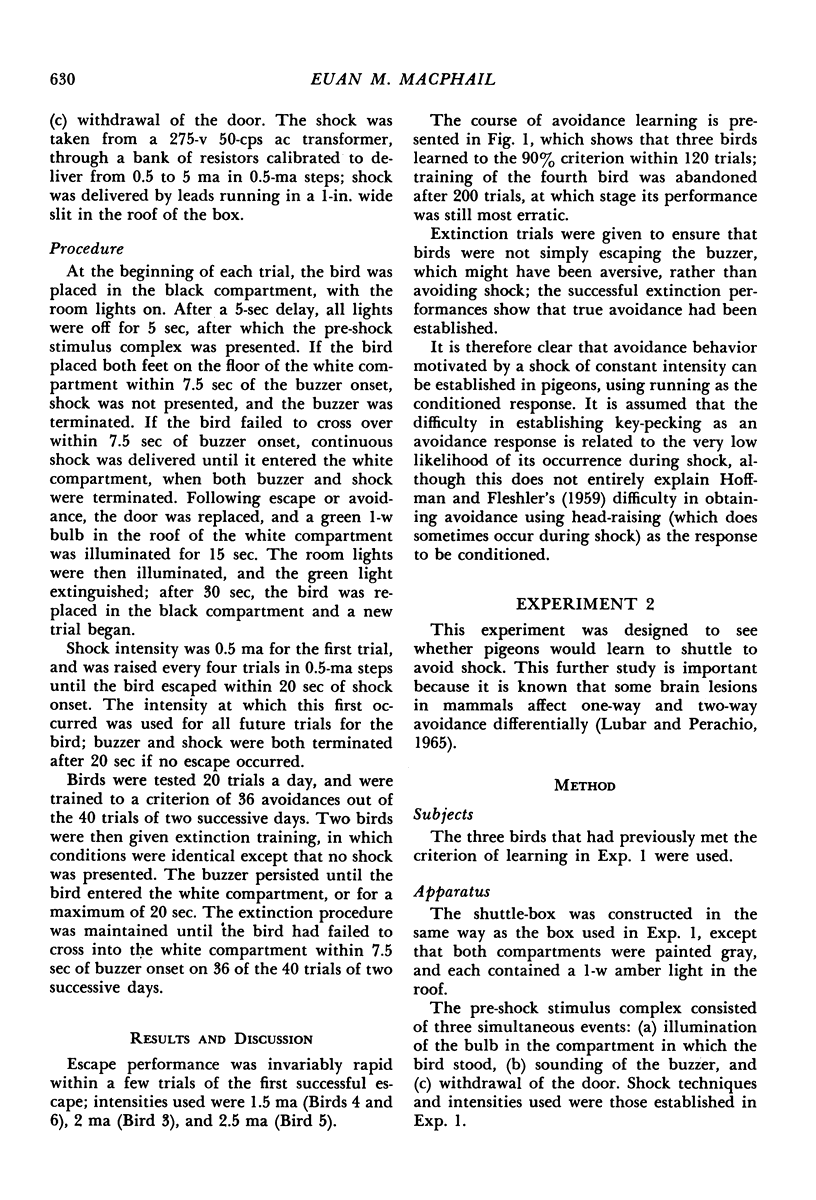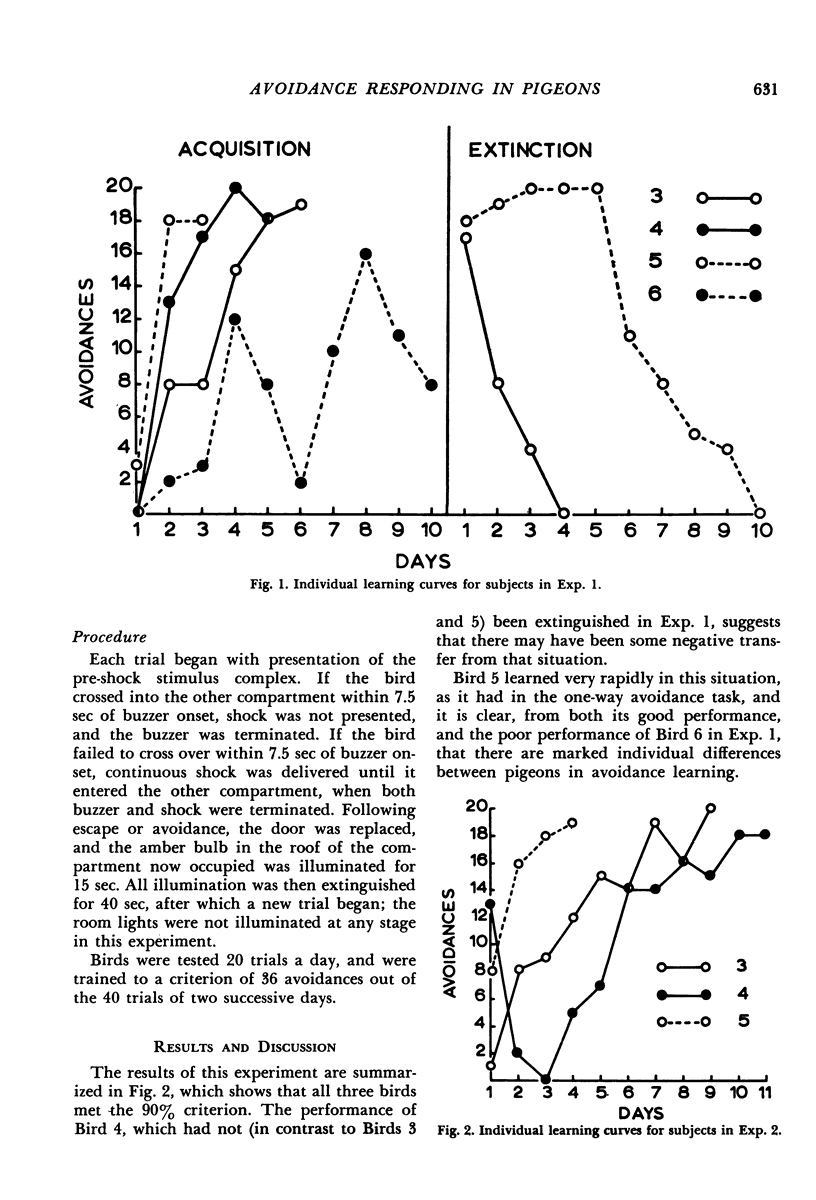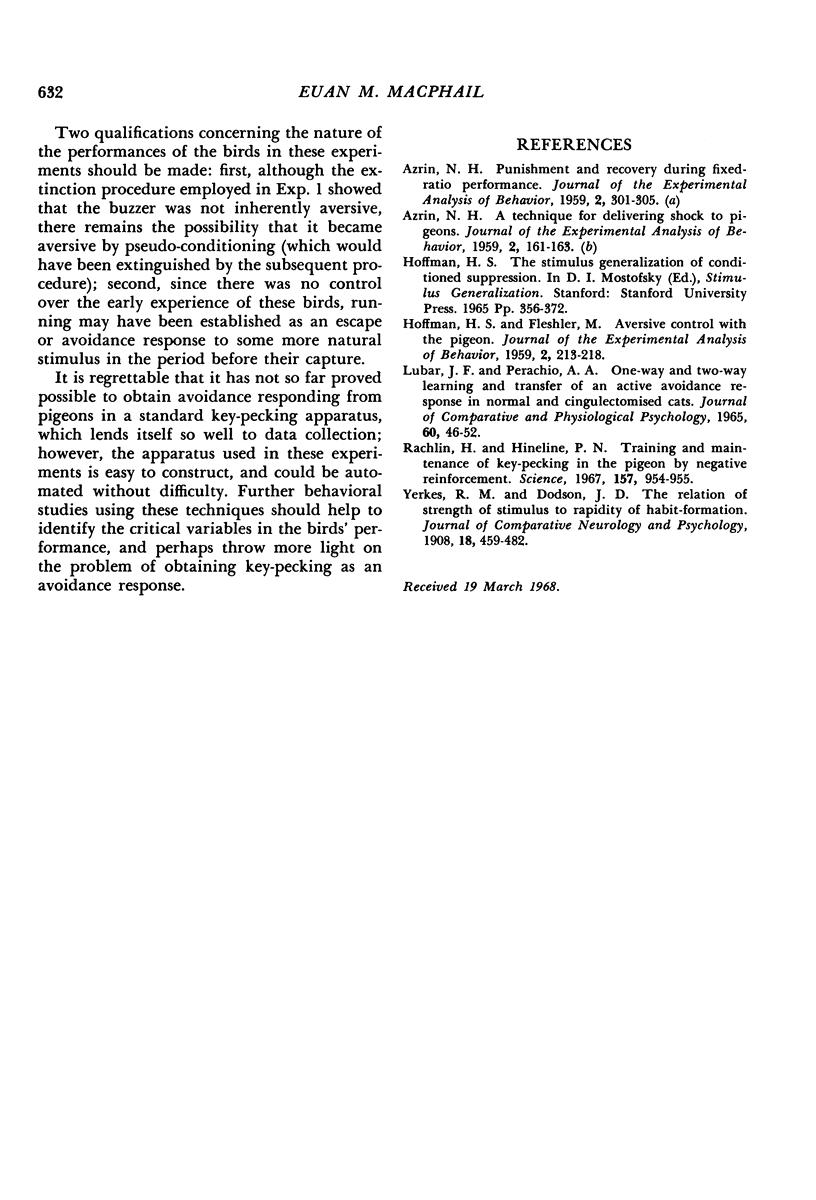Abstract
Four pigeons were trained in a one-way shuttle box avoidance situation. Three of the birds met the criterion of 90% avoidances; the fourth, although frequently avoiding successfully, was too erratic to meet the criterion. Avoidance responding in two of the birds was subsequently extinguished, showing that the response was true avoidance, and not escape from the buzzer warning stimulus. In Experiment 2, the three birds that had met criterion in Experiment 1 were trained in a two-way avoidance task, and all three met the criterion of 90% avoidances. The shuttle box therefore provides a rapid and reliable method of obtaining avoidance performance in pigeons.
Full text
PDF



Selected References
These references are in PubMed. This may not be the complete list of references from this article.
- HOFFMAN H. S., FLESHLER M. Aversive control with the pigeon. J Exp Anal Behav. 1959 Jul;2:213–218. doi: 10.1901/jeab.1959.2-213. [DOI] [PMC free article] [PubMed] [Google Scholar]
- LUBAR J. F., PERACHIO A. A. ONE-WAY AND TWO-WAY LEARNING AND TRANSFER OF AN ACTIVE AVOIDANCE RESPONSE IN NORMAL AND CINGULECTOMIZED CATS. J Comp Physiol Psychol. 1965 Aug;60:46–52. doi: 10.1037/h0022292. [DOI] [PubMed] [Google Scholar]
- Rachlin H., Hineline P. N. Training and maintenance of keypecking in the pigeon by negative reinforcement. Science. 1967 Aug 25;157(3791):954–955. doi: 10.1126/science.157.3791.954. [DOI] [PubMed] [Google Scholar]


